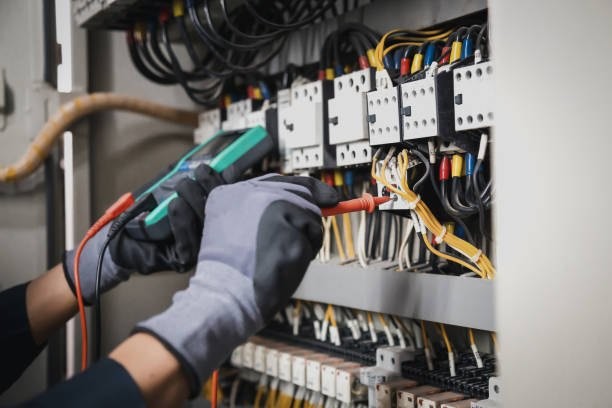In the fast-paced world we live in, electricity plays a crucial role in powering our homes and businesses. However, electrical emergencies can occur unexpectedly, posing serious threats to life and property. When faced with such situations, Australians must know how to prioritise safety while waiting for emergency electricians to arrive.
In this article, we will explore the potential hazards of electrical emergencies and provide comprehensive safety precautions to follow during the critical moments before professional help arrives.
Why Call An Emergency Electrician?
Calling an emergency electrician is crucial when faced with electrical issues that pose immediate threats. These professionals specialise in rapid response and can address potentially dangerous situations, ensuring the safety of your home and its occupants. An emergency electrician possesses the expertise to diagnose and resolve critical electrical problems, such as power outages, sparking outlets, or exposed wiring.
Attempting to handle electrical emergencies without professional assistance can lead to severe consequences, including electrical shocks, fires, or further damage to your property. An emergency electrician is equipped with the necessary tools and knowledge to swiftly assess the situation, implement temporary solutions if needed, and provide a comprehensive fix. By calling an emergency electrician promptly, you prioritise the well-being of your household and safeguard your property from potential disasters.
Things To Do When Waiting For The Arrival of Emergency Electricians
Here are some things that you should do before emergency electricians arrive.
1. Staying Calm and Collected:
It's natural to feel anxious during an electrical emergency, but maintaining a calm demeanour is crucial. Panicking can hinder your ability to make rational decisions and follow safety protocols. Taking a few deep breaths and focusing on the tasks at hand can help you stay composed and think clearly about the necessary precautions.
2. Isolating the Hazardous Area:
In some cases, the emergency might involve a specific area or appliance. If possible, isolate the hazard by turning off the power supply to that particular section of your home or business. This can prevent the situation from escalating and reduce the overall risk until the emergency electricians arrive.
3. Avoiding DIY Repairs:
While waiting for emergency electricians, resist the temptation to attempt any do-it-yourself (DIY) repairs. Electrical systems are complex, and attempting to fix the issue without proper knowledge and equipment can lead to further complications or, worse, result in electrocution or fires. Leave the repairs to the professionals who are trained to handle such situations safely.
4. Ensuring Evacuation if Necessary:
In severe cases where there is an immediate threat to life or property, it may be necessary to evacuate the premises. If you smell burning or notice smoke, evacuate the building immediately and call emergency services. Prioritise the safety of yourself and others, and only re-enter the premises once it has been declared safe by authorities and electricians.
5. Communicating with Neighbors:
During an electrical emergency, it's advisable to inform neighbours about the situation, especially if the issue might affect them as well. Clear communication can prevent confusion and help others take necessary precautions. In cases of power outages, coordinating with neighbours can be beneficial for a collective response.
6. Having Emergency Supplies Ready:
While awaiting the arrival of emergency electricians, it's essential to have basic emergency supplies on hand. This may include flashlights, batteries, a first aid kit, and, if possible, a battery-operated radio for updates on the situation. Being prepared can make the waiting period more manageable and ensure you have the necessary tools if the emergency persists.
Conclusion
In conclusion, Australians facing electrical emergencies must prioritise safety while waiting for the timely arrival of emergency electricians. Identifying the signs of an electrical emergency, promptly contacting professionals, staying calm, and avoiding DIY repairs are crucial steps in mitigating risks. Isolating hazardous areas, evacuating if necessary, communicating with neighbours, and having emergency supplies ready further contribute to a comprehensive safety approach. By following these precautions, Australians can protect themselves, their families, and their properties during critical moments of electrical emergencies. Remember, safety should always be the top priority, and professional assistance is the key to resolving electrical issues effectively and safely.
